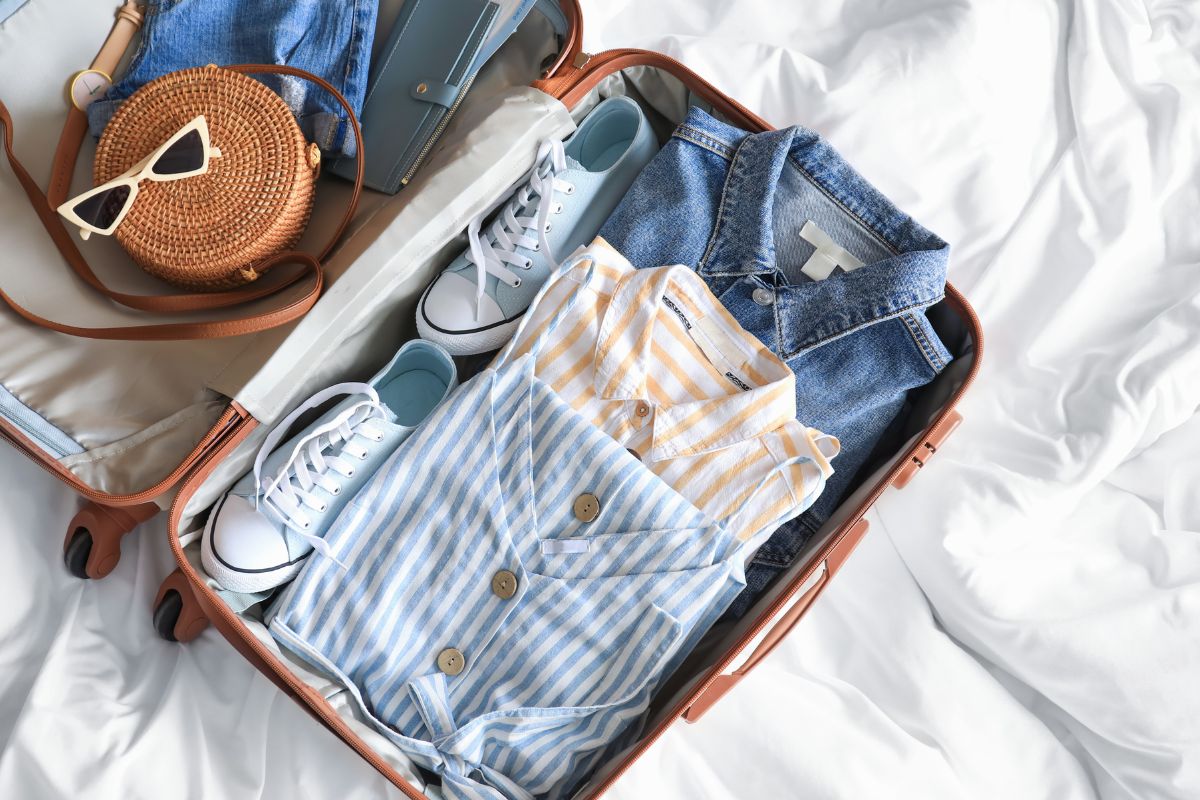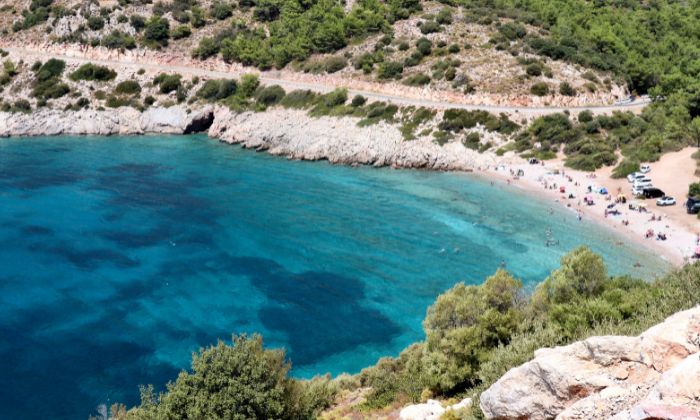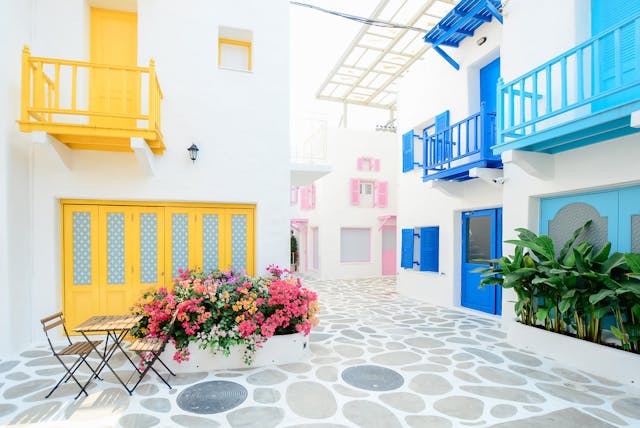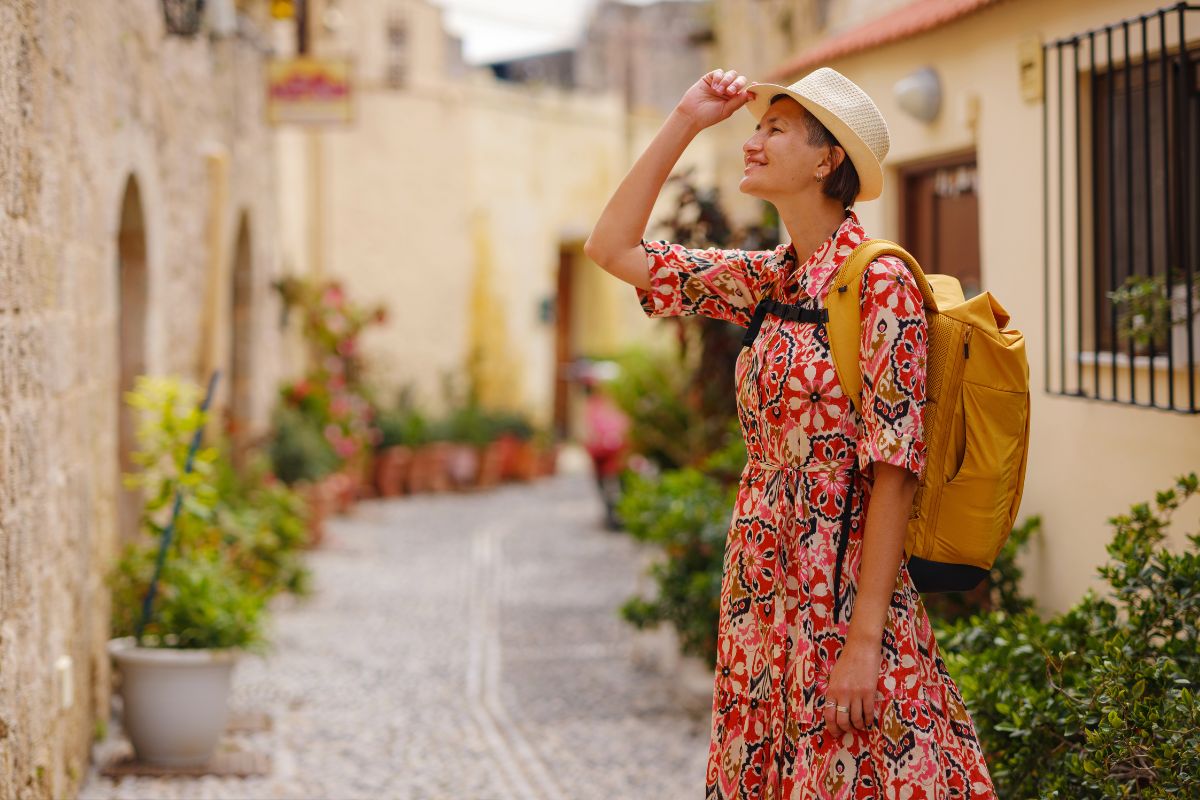
30 seconds summary
-
Staying organized on long flights and multi-country tours is crucial for a smooth travel experience. Key strategies include packing smart with versatile luggage like a men’s laptop backpack, using technology like travel apps and offline maps, and keeping essential documents and backups easily accessible.
-
Prioritize comfort with snacks, entertainment, and hydration, and stay secure with anti-theft features. Embrace flexibility for unexpected changes, and adopt a minimalist packing approach to reduce stress.
-
With careful planning and organization, you can enjoy your journey with ease and peace of mind.
Traveling across the world, hopping between airports, cities, and countries, is a dream come true for many. However, navigating the logistical challenges of long flights and multi-country tours requires careful planning and organization to ensure smooth transitions between destinations. Whether you’re embarking on a vacation, business trip, or a global adventure, staying organized can alleviate stress and make your experience much more enjoyable. This article will explore strategies and tips on how to stay organized during long flights and multi-country tours.
1. Pack Smart: The Foundation of Organization
The key to staying organized on a long flight and during a multi-country tour is in the preparation and packing. While it might be tempting to throw everything into one bag, it’s important to organize your luggage in a way that makes everything accessible and manageable.
Choose the Right Luggage
Choosing the right luggage is step one. For many travelers, a men’s laptop backpack is an excellent choice because it allows for easy access to essential items like laptops, travel documents, and personal items. A well-designed backpack not only carries your laptop and devices but also has enough compartments to keep other necessities like your passport, chargers, travel wallet, and headphones in an organized fashion. Look for a backpack with multiple zippered sections, padded compartments, and a water-resistant exterior for added convenience and durability.
When flying internationally or taking a long flight, it is essential to consider the size and weight of your bag. Many airlines have strict carry-on regulations, so check your airline’s baggage policy beforehand. Packing cubes can also be incredibly useful for separating clothing, toiletries, and accessories. These compact organizers save time when you’re digging through your bag, ensuring that you only have to unpack once.
Roll, Don’t Fold
To maximize space and minimize wrinkles, rolling your clothes is a great way to pack efficiently. Use packing cubes or compression bags to further save room, especially if you’re packing for multiple destinations. These items will allow you to fit more into your luggage without creating chaos inside.
Essentials at the Top
When traveling, particularly on long flights or multi-country tours, some items are simply more essential than others. These essentials should be placed at the top or in easily accessible compartments. Things like medications, a neck pillow, headphones, and snacks should be within easy reach. In your men’s laptop backpack, ensure that your laptop is safely secured in its compartment, and other small tech gadgets like a power bank or chargers are placed in the top zippered compartments for convenience.
2. Prepare for Long Flights with Comfort in Mind
Long flights can be taxing, especially when they span several hours or even an entire day. However, staying organized during the flight and taking comfort into account can make a huge difference.
Keep Entertainment Within Reach
During long flights, in-flight entertainment is often lacking, especially if you’re not a fan of the movie selection or the plane’s Wi-Fi doesn’t offer much connectivity. Organizing your own entertainment is a good solution. Place your tablet, e-reader, or headphones in an easily accessible section of your backpack. Having access to books, movies, music, or podcasts can make the flight much more enjoyable and pass the time more quickly.
Stay Hydrated and Pack Snacks
On long flights, hydration and snacks are crucial to keeping your energy levels up and avoiding irritability. Pack a reusable water bottle that can be refilled after security checks. Keep your favorite healthy snacks, like granola bars, nuts, or dried fruit, in one of your backpack’s compartments so you can easily grab them when hunger strikes. Having a well-organized snack section in your bag can help prevent the need to buy overpriced items on board.
Neatly Store Travel Accessories
Items like travel pillows, eye masks, and earplugs are essential for comfort but can easily become tangled or misplaced if not properly stored. Use your men’s laptop backpack to keep these accessories organized. Keep your pillow in a separate compartment or attach it to the outside of your backpack with a strap. Place eye masks and earplugs in a small pouch, so they are easy to find when you need them.
3. Stay Organized at the Airport
Navigating airports, especially in unfamiliar countries, can be chaotic and overwhelming. Being organized can help you stay on top of your itinerary and ensure that you don’t miss your flight or experience unnecessary delays.
Keep Travel Documents Together
The last thing you want is to be fumbling through your bags for your passport, boarding pass, or other travel documents. Keep your essential documents in one place. A travel wallet or an RFID-blocking pouch is perfect for holding these important items securely. Make sure your men’s laptop backpack has a separate compartment for your passport, boarding pass, and other documents for easy access.
Pack Airport Essentials
For smoother security checks, pack your essentials in a way that allows for easy removal when needed. Place your liquids, cosmetics, and electronics in easily accessible pockets so you don’t waste time at security. A men’s laptop backpack with a separate compartment for electronics can make this process much quicker. A zippered pocket specifically for your ID or credit cards can also be handy when you need to present them.
Use Travel Apps
Before you even step foot in the airport, make use of travel apps that help streamline your journey. From tracking your flight’s status to navigating through airport terminals, apps can reduce confusion and help you stay on schedule. Download the apps for your airline and check the map of the airport in advance. This way, you’ll always know where your gate is, where to get food, and how to navigate through the terminal.
4. Stay Flexible and Be Ready for Changes
During multi-country tours, it’s essential to remain flexible and open to last-minute changes. While staying organized is key, it’s also important to prepare for the unexpected. There are always potential delays, canceled flights, lost luggage, or missed connections that could throw a wrench in your plans. However, keeping a calm and organized demeanor can help you adapt to any changes that arise.
Have a Backup Plan
When traveling internationally, things don’t always go as planned. To avoid major disruptions, prepare backup plans for key aspects of your trip, such as accommodations, transportation, and excursions. Keep a printed copy of your itinerary, as well as digital versions on your phone or tablet. Many smartphones offer the option to download maps for offline use, so you don’t have to rely on Wi-Fi when navigating in a foreign city. Keeping essential emergency contacts, such as embassy phone numbers and local services, in your men’s laptop backpack is also a great idea for peace of mind.
Organize Your Finances
Handling money efficiently is crucial when touring multiple countries. Before traveling, ensure that you’ve informed your bank about your international travel plans to avoid any issues with your cards. Keep small amounts of local currency in separate sections of your backpack for easy access. It’s also wise to store backup credit cards in a secure location, like the interior zippered compartment of your backpack, in case your primary cards are lost or stolen.
5. Keep Track of Your Belongings
Finally, during long flights and multi-country tours, it’s easy to forget where you’ve placed your belongings. To prevent losing anything important, make a habit of regularly checking your bag for its contents. One effective strategy is to perform a mental checklist of the items you need to have on hand throughout the day. For instance, check that you have your passport, phone, laptop, and any necessary chargers. A men’s laptop backpack with plenty of compartments can help make this easier, so you won’t have to dig through your entire bag to find a single item.
6. Embrace the Digital Revolution: Using Technology to Stay Organized
In today’s digital age, technology plays a major role in helping travelers stay organized, especially when navigating the complexities of long flights and multi-country tours. From managing itineraries to handling payments, there are numerous apps and tools available that make travel more efficient and less stressful.
Use a Travel Management App
Apps like TripIt or Google Trips allow you to automatically sync your flight details, hotel reservations, car rentals, and other travel plans in one location. These apps are a lifesaver when you have multiple destinations or connections to keep track of. You can easily access your travel details directly from your men’s laptop backpack by opening your phone or tablet, ensuring that you never miss a beat.
For international tours, these apps help you store everything digitally, eliminating the need to carry printed confirmations. You can also receive real-time flight updates, such as delays or gate changes, and keep track of your travel schedule, all in the palm of your hand. For added convenience, these apps often work offline, so you don’t need to worry about finding Wi-Fi when you’re in a new country.
Download Offline Maps
Offline maps are another key technology tool for staying organized while touring. Whether you’re walking through a bustling city or navigating an unfamiliar airport, having an offline map can make a huge difference in saving time and preventing confusion. Google Maps and Maps.me are excellent resources for travelers who need reliable navigation without internet access.
If you’re traveling internationally, ensure you have the map of each city or area you’re visiting downloaded to your device before you leave. Store these maps on your phone or tablet, which is conveniently housed in your men’s laptop backpack, so you’re never lost or scrambling for directions.
Keep Important Files in the Cloud
In addition to apps, cloud services like Google Drive, Dropbox, or OneDrive offer travelers a great way to back up important files. While on a multi-country tour, the last thing you want is to lose crucial documents or photos. By uploading travel-related documents (such as visas, itineraries, and travel insurance) and important files (like photos, work presentations, or project details) to the cloud, you can access them from anywhere. This offers peace of mind in case your device is lost, stolen, or damaged.
Cloud storage also allows you to work on documents, presentations, or any projects you might need to complete during your trip. Your men’s laptop backpack becomes even more essential during long flights or downtime in cafes or airports, when you can pull out your laptop and continue your work uninterrupted.
Set Up Alerts for Important Travel Notifications
Whether it’s for your flight, hotel reservation, or car rental, setting up alerts will ensure that you’re kept informed about any changes to your schedule. For instance, flight alert apps such as FlightAware can send you real-time updates on flight delays or cancellations. Similarly, hotel apps can send reminders when check-in times are approaching or if there are any changes to your booking.
This information, along with any notifications about your destination country (like visa requirements or local events), can be stored or accessed easily from your smartphone or tablet in your men’s laptop backpack. By relying on these digital tools, you ensure you’re never caught off guard by an unexpected event.
7. Implement a Routine for Security and Safety
In the midst of travel, safety and security must be top priorities. While many travelers focus on packing and planning activities, ensuring the safety of your belongings is just as critical, especially during long flights or while in unfamiliar countries.
Secure Your Belongings with Anti-Theft Features
When it comes to carrying your valuables on a long flight or across borders, securing your bags is paramount. Many men’s laptop backpacks are designed with anti-theft features such as lockable zippers, RFID-blocking compartments, and cut-resistant straps. These features help protect you from pickpockets and other potential threats when you’re traveling in crowded or high-risk areas.
Make sure that your men’s laptop backpack is always in your line of sight and that you use these security features when moving through public places or crowded airports. Additionally, using a lock for your backpack or luggage can add an extra layer of security, especially when you’re staying in shared accommodations like hostels or using public transport.
Keep a List of Emergency Contacts and Information
It’s essential to prepare for emergencies. Having a list of emergency contacts, including the local embassy, your accommodation, and a reliable contact back home, can make a world of difference in case of an emergency. Store this information digitally on your phone or tablet, but also have a printed copy in your men’s laptop backpack. This ensures that you can access the information regardless of the situation.
Conclusion
Traveling on long flights and multi-country tours can be both exciting and overwhelming, but staying organized is the key to making the experience enjoyable and stress-free. From selecting the right luggage, like a men’s laptop backpack, to maintaining a system for keeping your travel documents and personal items in order, preparation is essential. With a little planning and attention to detail, you’ll be able to focus on the adventure ahead rather than the chaos of disorganization.
Staying flexible and ready for the unexpected ensures that you’re never caught off guard, and being proactive in managing your time and resources will allow you to enjoy the thrill of travel while keeping your belongings secure and your mind at ease. So, whether you’re heading to a nearby city or crossing multiple time zones, these tips will help you stay organized, relaxed, and prepared every step of the way.








